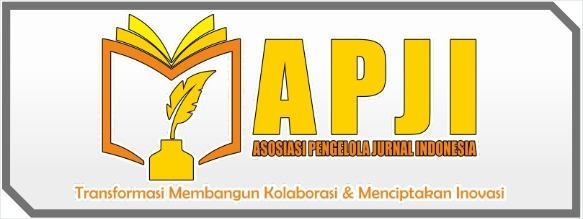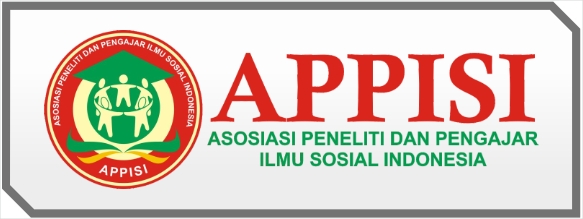Pengaruh Intensitas Mengakses Instagram Dan TikTok Terhadap Perilaku Imitatif Pada Siswa SMA Al-Irsyad Kota Tegal
DOI:
https://doi.org/10.59581/harmoni-widyakarya.v1i2.3161Keywords:
Access Intensity, Instagram and TikTok, Imitative BehaviorAbstract
Social media is a digital platform that facilitates online social activities for users, including communication, interaction, and content creation such as writing, videos, or photos. Information shared on social media can reach a wide audience and be accessed by users globally within a short period, typically within 24 hours. Popular examples of social media platforms include Instagram and TikTok. This research is grounded in New Media theory and Social Learning Theory. These theories align with the hypothesis of the study, particularly in understanding digital data controlled by software, such as social media platforms, and how exposure to social media content can influence behavior, as outlined in the Social Learning Theory. The study focuses on observing imitative behavior among students at Al-Irsyad High School in Tegal City. The research adopts a quantitative approach, specifically descriptive research. Through data analysis, the researchers were able to confirm the hypothesis using the Pearson Product Moment Test or correlation analysis. The findings indicate a positive correlation with a strong degree of association, supporting the hypothesis.
References
Ardianto, M. E., Komala, M. L., Karlinah, S. S. (2007). Komunikasi Massa Suatu Pengantar, Bandung: Simbiosa Rekatama
Fransiska S.S, Trias M, Nadia R, Khariam F.H. (2019). Intensitas Pengguna Media Sosial, Kebiasaan Olahraga, dan Obesitas Pada Remaja Di SMA Negeri 6 Surabaya Tahun 2019. Jurnal Fakultas Kesehatan Masyarakat Universitas Airlangga
Ghozali, I. (2021). Aplikasi Analisis Multivariate dengan Program IBM SPSS 26, Semarang: PT Elex Media Komputindo
http://eprints.uniska-bjm.ac.id/8724/1/article%20fauzan.pdf https://repository.usd.ac.id/40398/2/172214035_full.pdf http://digilib.uinsby.ac.id/34617/1/Yolanda%20Bilqis%20Sherly_J01215039.pdf
https://databoks.katadata.co.id/datapublish/2022/03/23/ada-2047-juta-pengguna internet-di-indonesia-awal-2022
https://dianisa.com/pengertian-instagram/ https://pojoksosmed.com/tiktok/tik-tok-adalah/
https://jurnal.pancabudi.ac.id/index.php/JUMANT/article/view/502/474
https://tekno.kompas.com/read/2022/01/03/08070077/tiktok-diprediksi-jadi medsos-terbesar-ketiga-pada-2022?page=all
https://www.merdeka.com/jateng/contoh-perkembangan-teknologi-lengkap beserta-penjelasannya-kln.html
John Fiske. (2014). Pengantar Ilmu Komunikasi, Jakarta: Rajawali Pers
Junaedi. F, Sukmono. F. (2019). Komunikasi Dalam Media Digital, Malang: Buku Litera Media
Kadir, Abdul. (2003). Pengenalan Teknologi Informasi, Yogyakarta : Andi Yogyakarta
Koentjaraningrat. (1997). Metode-Metode Penelitian Masyarakat, Jakarta: PT Gramedia Pustaka
Mulyana, M. D. (2005). Ilmu Komunikasi Suatu Pengantar, Bandung: PT Remaja Rosdakarya
Nasrullah, M. R. (2015). Media Sosial : Perspektif Komunikasi, Budaya dan Sosioteknologi, Bandung: Simbiosa Rekatama Media
S.F. Soliha. (2015). Tingkat Ketergantungan Pengguna Media Sosial Dan Kecemasan Sosial. UNDIP Interaksi : Jurnal Ilmu Komunikasi
Stephen W. Little John & Karen A. (2014). Teori Komunikasi Theories of Human Communication, Tangerang: Salemba Humanika
Sugiyono. (2017). Metode Penelitian Kuantitatif Kualitatif dan R&D, Bandung: Alfabeta
Utama Luik, P. J. (2020). Media Baru: Sebuah Pengantar, Jakarta Timur: Prenada Media Group
Wawan. A, Dewi. (2018). Teori dan Pengukuran Pengetahuan Sikap dan Perilaku Manusia, Yogyakarta: Nuha Medika
Wilga Secsio R.P, Nunung Nurwati, Meilanny Budiarti S. (2016). Pengaruh Media Sosial Terhadap Perilaku Remaja. Prosding Peneliti & Pengabdian Masyarakat
Downloads
Published
How to Cite
Issue
Section
License
Copyright (c) 2023 Nurcahyawati Lestari, Sarwo Edy, Inas Sany Muyassaroh

This work is licensed under a Creative Commons Attribution-ShareAlike 4.0 International License.














